The 2016 National Church Life Survey examined the characteristics of senior local church leaders across denominations. Results reveal that half are middle aged. They are most commonly male, university-educated and in their first marriage. Over a quarter have another occupation in addition to their ministry role.
Age
In 2016, half of local senior leaders were middle-aged (40-59 years), while 17% were aged between 20 and 39 years. Unsurprisingly, there is a greater bulk of leaders in their middle years. The age distributions for leaders were similar in 2011 and 2016, although the peak of leaders in their 50s (33% in 2011) had reduced somewhat by 2016 (29% in 2016).
The average age of local senior leaders in 2016 across the denominations was 53 years (60 for Catholic priests, 55 for Mainstream Protestants, 48 for Pentecostals and 50 for Other Protestants).
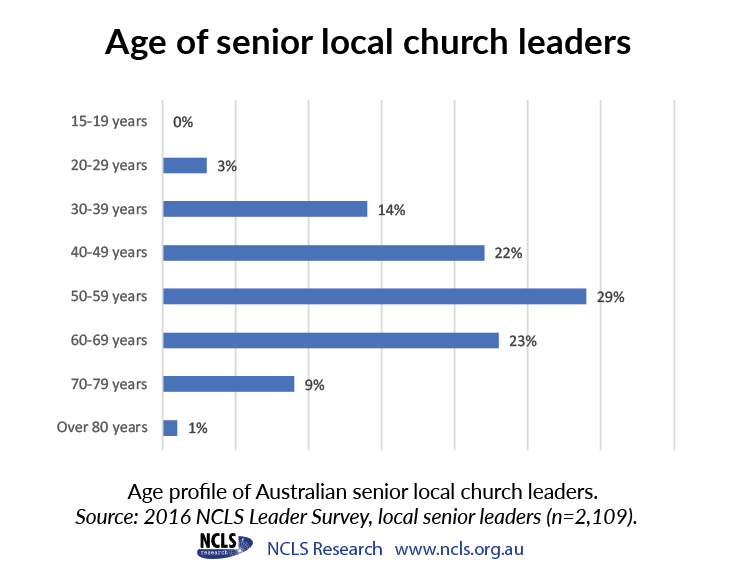
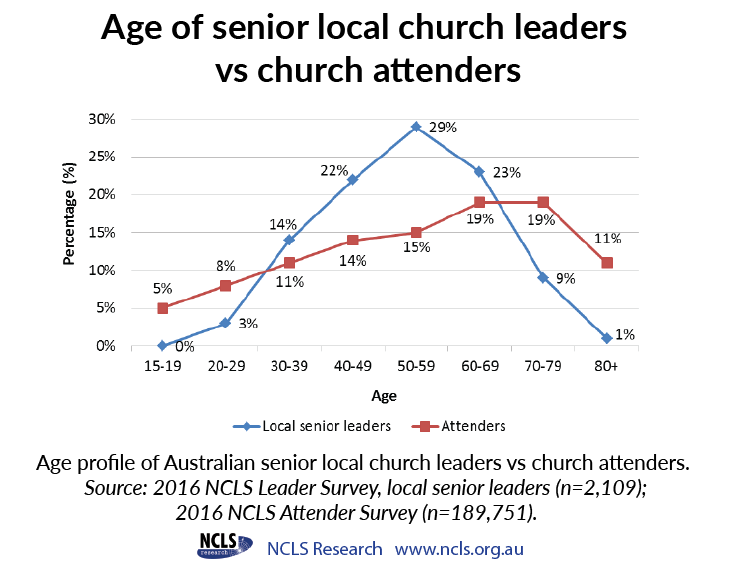
Gender
In 2016, 22% of local senior leaders were women and 78% were men, which was very similar to the result in 2011 (21% women and 79% men). Comparing the broad denominational groupings, women were most prominent in the Pentecostal movements (33%, compared with 22% of Mainstream Protestants and 19% of Other Protestants).
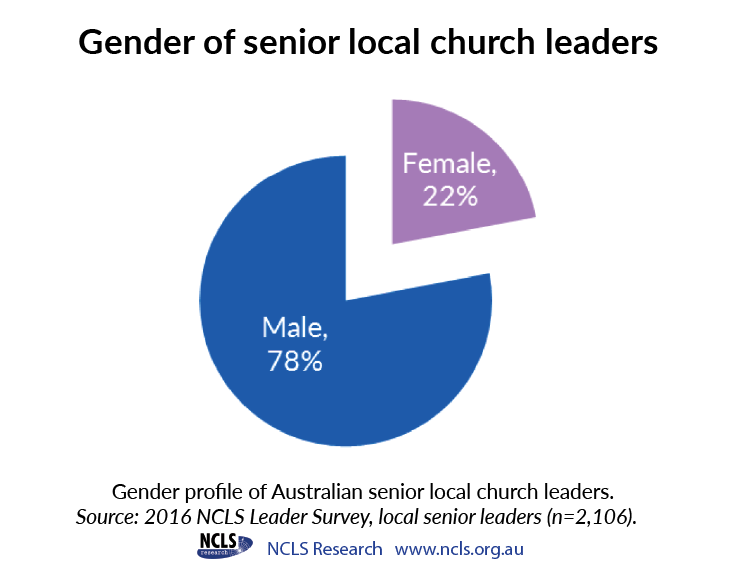
Marital status
Some 75% of local senior leaders in 2016 were in their first marriage, a similar result to 2011. Looking at Protestants only, 85% were in their first marriage (more than nine in 10 Pentecostals, approximately eight in 10 Mainstream Protestants, with Other Protestants in between), 6% were remarried after divorce and 2% remarried after being widowed. Of those Protestants not married, 4% were never married, 2% were divorced and 2% were widowed.
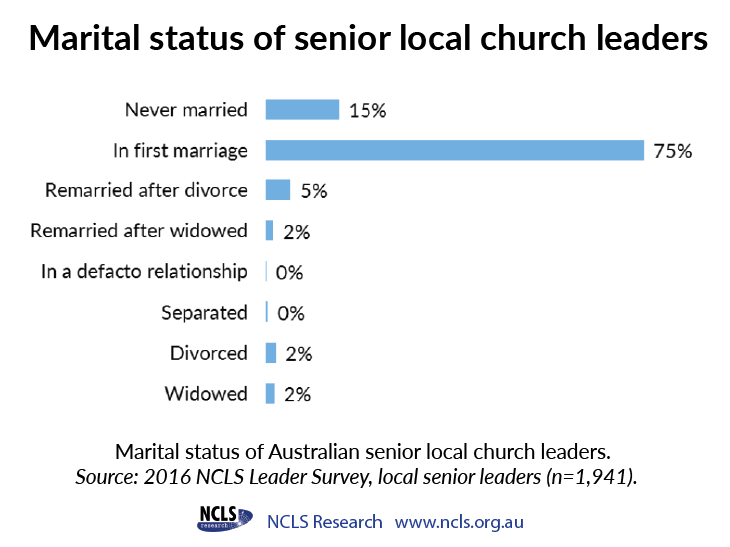
Country of birth
Some 77% of local senior leaders were Australian-born (including 16% who were second generation migrants). Another 11% were born overseas in another country where English is the main language spoken, whereas 12% were born in another country where English is not the main language. Comparisons with 2011 indicate an increase in the proportion born in Australia, and a decrease in the proportion born in other English-speaking countries.
The results for the country of birth of leaders are quite different from the results of church attenders at large, some 36% of whom were overseas-born (27% in a non-English speaking country) (McAleese, Pepper and Powell, 2018). However it should be noted that the NCLS Leader Survey was available only in English (unlike the attender survey). Because of this limitation, the percentage of leaders born overseas should be considered a conservative estimate. Protestant senior local leaders were less than a third as likely as their Catholic counterparts to have been born in a non-English speaking country (9% of Protestants versus 31% of Catholics).
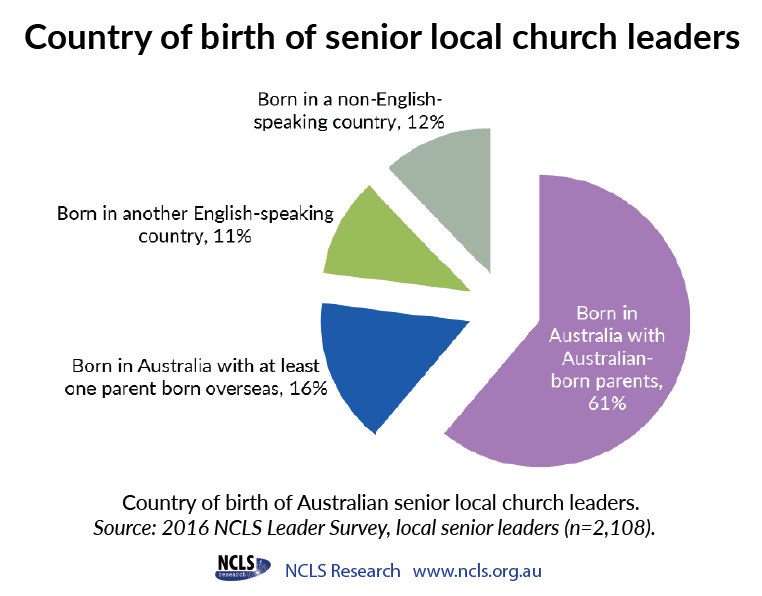
Occupations other than ministry
Across denominations, 28% of local senior leaders had another job in addition to their local church ministry role (including 17% whose job was “non-church related”). Some 36% had home duties or family responsibilities. Seven percent were semi-retired, nine percent were also studying, while 44% indicated they had no other occupations. While the proportion with an occupation apart from their role in the local church was similar in 2011 and 2016, the distributions between types of occupations differed. Compared with 2011, a greater proportion of leaders in 2016 had a non-church related job and a lesser proportion had an additional church-related job.
Comparing denominations, Pentecostals were the group most likely to report an additional occupation, with more than four in 10 in a non-church related job, compared with one in 10 local leaders in Mainstream and Other Protestant denominations.
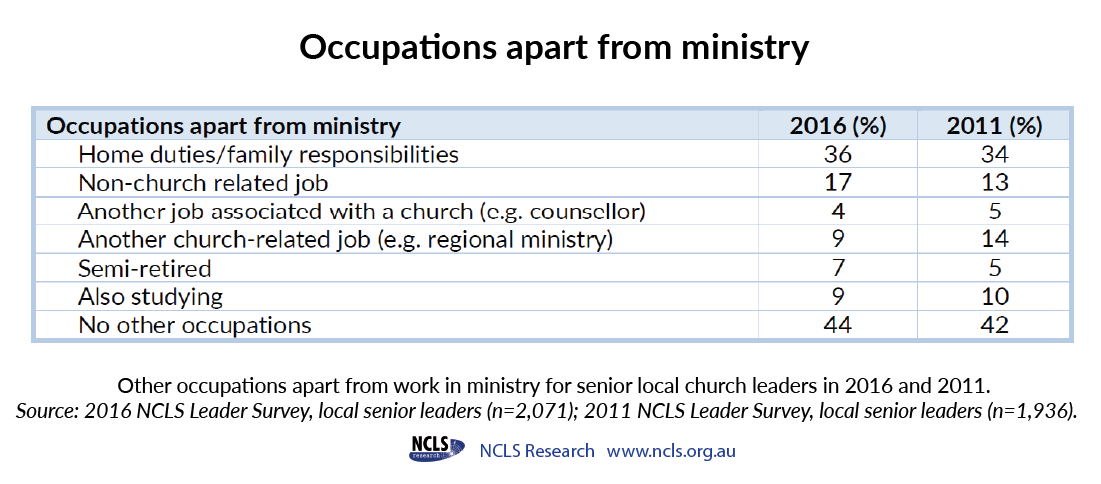
Conclusion
While the gender mix amongst leaders remained relatively stable since 2011, some changes are seen in country of birth. An increase is seen in the proportion of leaders born in Australia, and a decrease in the proportion born in other English-speaking countries.
Some denominations face significant issues to do with the ageing of their local senior leaders. Not only do they have difficulty supplying adequate numbers of leaders, but older leaders may find it hard to understand and relate to the cultures and values of younger attenders. Research based on 2011 NCLS data found that churches with older senior clergy were significantly less able to retain their young people (Pepper & Powell, 2017).
With over a quarter of leaders having another occupation and over a third having home duties/family responsibilities, in addition to their ministry role, leaders will need to be wise with their time management and boundaries as they 'swap hats' of work and ministry commitments during a typical working week.
More details can be found in the full research paper 'Senior Leaders in Local Churches: A Demographic Profile and Leadership Snapshot'



